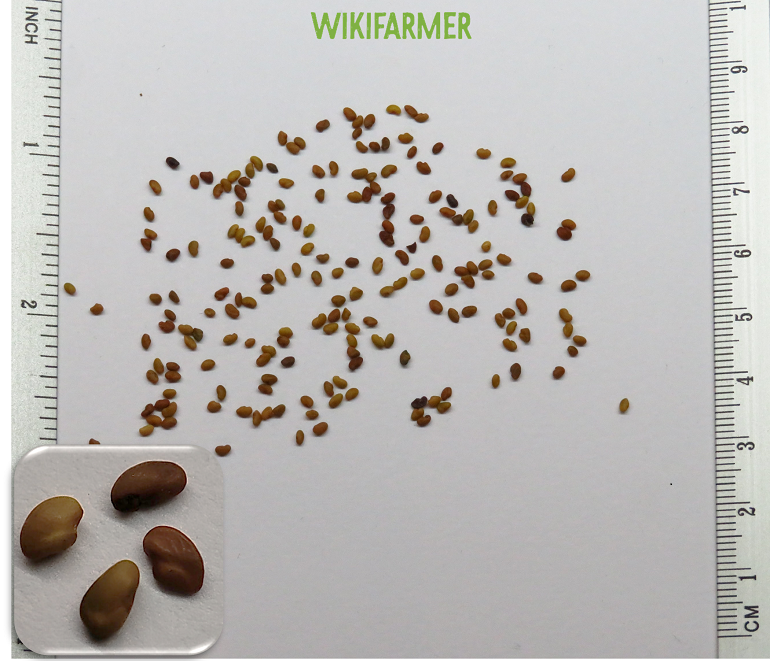Agriculture has always been the backbone of human civilization, and seed planting is the foundation of agriculture. Plants provide food, fiber, and fuel to humans and animals, and their growth and yield depend on the quality of seeds and how they are planted. Traditional farming practices involve manual seed planting, which is time-consuming, labor-intensive, and inefficient. With the growing population and demand for food, there is a need for sustainable agriculture practices that can produce more food with fewer resources. In recent years, several advances have been made in seed planting technology that can revolutionize agriculture and make it more sustainable.
One of the most significant advances in seed planting technology is the development of precision seed planting machines. These machines are designed to plant seeds with high accuracy and efficiency. They use advanced sensors and software to monitor soil conditions, seed depth, and spacing, and adjust the planting process accordingly. The result is a uniform and optimal spacing between seeds, which reduces competition for resources and improves plant growth and yield. Precision seed planting machines also reduce seed waste and labor costs, بذور ملوخية making farming more profitable and sustainable.
Another important advance in seed planting is the use of seed coating technology. Seed coatings are thin layers of materials that are applied to the surface of seeds to enhance their germination, growth, and protection against pests and diseases. Seed coatings can also improve soil moisture retention and nutrient uptake, which promotes plant growth and yield. There are several types of seed coatings available, including polymer, biological, and mineral-based coatings. The choice of seed coating depends on the type of crop, soil conditions, and environmental factors.
Seed planting drones are also gaining popularity in agriculture. These drones are equipped with high-resolution cameras and sensors that can detect soil conditions, plant health, and crop growth. They can also plant seeds with high precision and accuracy, covering large areas of land in a short time. Seed planting drones can work in remote areas or inaccessible fields, reducing the need for manual labor and improving safety for farmers. They also reduce soil compaction and erosion, which can improve soil health and sustainability.
Vertical farming is another innovative approach to seed planting that is gaining popularity in urban areas. Vertical farming involves growing crops in vertical layers instead of traditional horizontal fields. This approach optimizes the use of space, water, and nutrients, and reduces the need for pesticides and herbicides. Vertical farming also allows farmers to grow crops year-round, regardless of weather conditions, and reduces transportation costs and carbon emissions associated with food distribution.
In conclusion, the advances in seed planting technology have the potential to revolutionize agriculture and make it more sustainable. Precision seed planting machines, seed coatings, seed planting drones, and vertical farming are some of the innovative approaches that can improve crop yield, reduce labor costs, and promote environmental sustainability. These technologies can help farmers to produce more food with fewer resources, reduce food waste, and improve the quality of life for all. It is essential to continue investing in research and development to further advance seed planting technology and promote sustainable agriculture practices.
Última modificação em
One of the most significant advances in seed planting technology is the development of precision seed planting machines. These machines are designed to plant seeds with high accuracy and efficiency. They use advanced sensors and software to monitor soil conditions, seed depth, and spacing, and adjust the planting process accordingly. The result is a uniform and optimal spacing between seeds, which reduces competition for resources and improves plant growth and yield. Precision seed planting machines also reduce seed waste and labor costs, بذور ملوخية making farming more profitable and sustainable.
Another important advance in seed planting is the use of seed coating technology. Seed coatings are thin layers of materials that are applied to the surface of seeds to enhance their germination, growth, and protection against pests and diseases. Seed coatings can also improve soil moisture retention and nutrient uptake, which promotes plant growth and yield. There are several types of seed coatings available, including polymer, biological, and mineral-based coatings. The choice of seed coating depends on the type of crop, soil conditions, and environmental factors.
Seed planting drones are also gaining popularity in agriculture. These drones are equipped with high-resolution cameras and sensors that can detect soil conditions, plant health, and crop growth. They can also plant seeds with high precision and accuracy, covering large areas of land in a short time. Seed planting drones can work in remote areas or inaccessible fields, reducing the need for manual labor and improving safety for farmers. They also reduce soil compaction and erosion, which can improve soil health and sustainability.
Vertical farming is another innovative approach to seed planting that is gaining popularity in urban areas. Vertical farming involves growing crops in vertical layers instead of traditional horizontal fields. This approach optimizes the use of space, water, and nutrients, and reduces the need for pesticides and herbicides. Vertical farming also allows farmers to grow crops year-round, regardless of weather conditions, and reduces transportation costs and carbon emissions associated with food distribution.
In conclusion, the advances in seed planting technology have the potential to revolutionize agriculture and make it more sustainable. Precision seed planting machines, seed coatings, seed planting drones, and vertical farming are some of the innovative approaches that can improve crop yield, reduce labor costs, and promote environmental sustainability. These technologies can help farmers to produce more food with fewer resources, reduce food waste, and improve the quality of life for all. It is essential to continue investing in research and development to further advance seed planting technology and promote sustainable agriculture practices.

 Precision Seed Drills
Precision Seed Drills